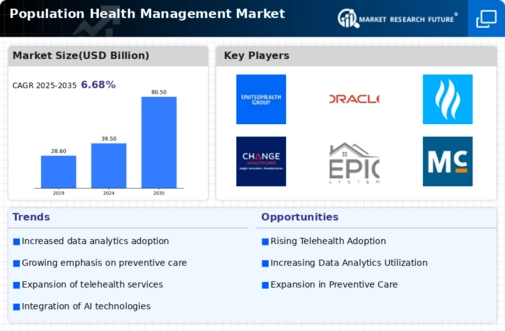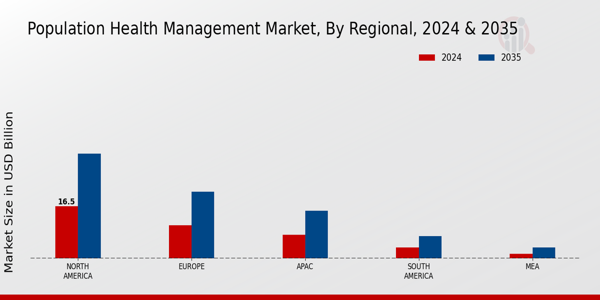The Global Population Health Management Market has witnessed significant growth over recent years as healthcare systems increasingly emphasize the importance of managing populations' overall health rather than just treating individual diseases. This shift has been driven by the increasing prevalence of chronic diseases, the rising cost of healthcare, and the need for efficient resource allocation. The competitive landscape consists of numerous players, both established and emerging, that are innovating and expanding their offerings to gain a competitive edge.
These players are employing a variety of strategies, including mergers and acquisitions, partnerships, and technological advancements, to capitalize on the growing demand for population health management solutions. By leveraging data analytics, care management tools, and integrated health technologies, companies aim to enhance patient care while reducing costs. As the market continues to evolve, organizations that can effectively adapt to changing regulations and patient needs are poised for success. Allscripts stands out within the Global Population Health Management Market due to its robust portfolio of healthcare solutions that streamline care coordination and data management.
With a strong emphasis on interoperability, Allscripts offers an integrated platform that connects various healthcare stakeholders, enabling more effective care delivery across settings.
The company has established a solid market presence, primarily leveraging its electronic health record (EHR) systems and advanced analytics capabilities to facilitate the management of patient populations. One of Allscripts' key strengths lies in its commitment to enhancing physician engagement and empowering healthcare providers with the tools necessary for informed decision-making. This focus on improving the clinician-patient relationship has positioned Allscripts as a trusted player in the population health management arena, allowing it to effectively address the evolving needs of healthcare systems globally.
UnitedHealth Group plays a pivotal role in the Global Population Health Management Market, offering comprehensive services that span health insurance, healthcare analytics, and care management.
With a diverse array of products including its Optum brand, UnitedHealth Group provides integrated solutions designed to enhance population health outcomes. The company's strong market presence is underscored by its holistic approach, which combines data-driven insights with personalized care plans to address the multifaceted needs of diverse populations. UnitedHealth Group's key strengths include its extensive data repositories and advanced analytic capabilities, enabling it to identify at-risk populations and deploy targeted interventions.
Furthermore, through strategic mergers and acquisitions, the company has expanded its capabilities and market reach, allowing it to continuously enhance its service offerings in the global arena. By prioritizing innovation and a patient-centered care model, UnitedHealth Group remains a formidable competitor in the population health management landscape, solidifying its commitment to improving health outcomes on a broad scale.




















